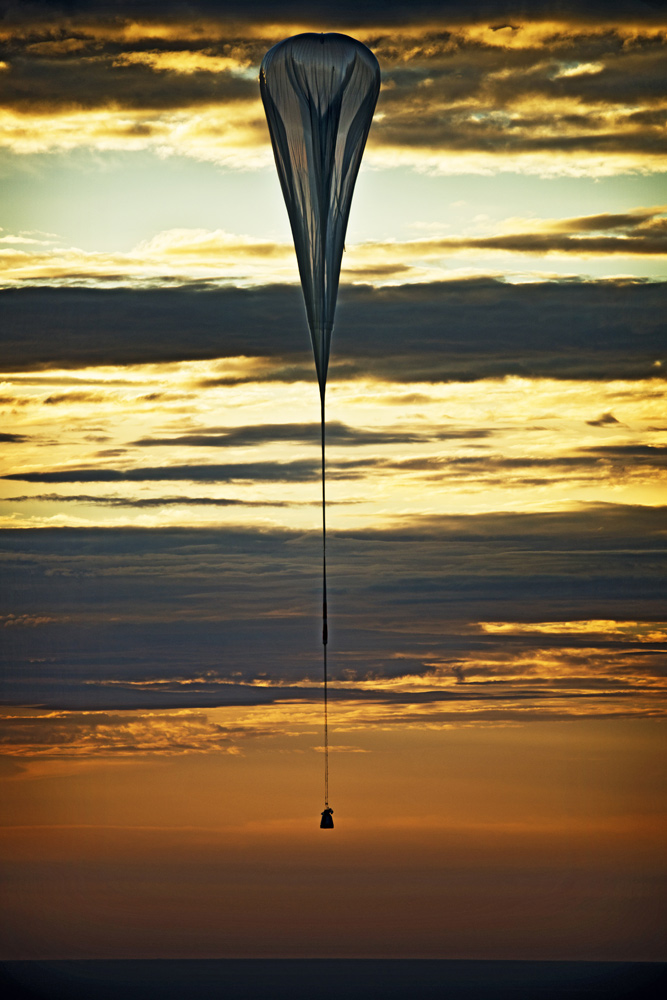Record-Breaking Supersonic Skydive: Why High Winds Are Risky

This story was updated at 2:17 p.m. ET.
Daredevil skydiver Felix Baumgartner is trying to make history, but the weather won't cooperate. Baumgartner's daring jump attempt from 23 miles above Earth — which, if all goes according to plan, will be the highest and fastest skydive ever — has been postponed until further notice because of wind during today's (Oct. 9) takeoff attempt.
Baumgartner, 43, will spend the lion's share of his dive plunging through the stratosphere, an atmospheric layer almost entirely devoid of weather. But it's his upward ascent to the stratosphere that requires clear and still skies.
A 55-story helium-filled balloon will lift Baumgartner, sitting inside a custom-built capsule, to an altitude of 120,000 feet (36,576 meters). To avoid the fragile, 0.0008-inch-thick polyethylene (plastic) balloon tearing during launch, takeoff will not be authorized if winds exceed 2 mph (3 kph) anywhere from ground level up to 800 feet (244 m) in altitude, according to a fact sheet from the dive's sponsor, Red Bull Stratos.
Winds must also be minimal at the border between the troposphere and the stratosphere (the first and second atmospheric layers), where turbulence is common.
In fact, high winds have already delayed Baumgartner once. The skydiver hoped to make his record-breaking attempt on Monday (Oct. 8), but postponed the jump one day to await better weather.
Secondly, Federal Aviation Administration regulations prohibit balloons from ascending if skies are overcast such that horizontal visibility is less than 3 miles (4.8 kilometers). Any precipitation will also prevent launch.
Breaking space news, the latest updates on rocket launches, skywatching events and more!
Lastly, the air must be sufficiently cold to enable Baumgartner's falling body to surpass the speed of sound. The warmer the air, the faster sound waves travel, so cooler weather is preferable to ensure that Baumgartner makes the world's first supersonic freefall.
Prior to launch, the Red Bull Stratos team will launch up to 10 radiosondes, or mini stratospheric balloons made of latex, which sample wind speed and direction, temperature, humidity, and atmospheric pressure every 500 feet (152 m) all the way up (if necessary) to Baumgartner's target jump altitude of 120,000 feet.
This data determines whether conditions are suitable for launch, and comparisons of the radiosonde data with the temperature readings taken during Baumgartner's ascent also enable the team to identify the point where Felix breaks the sound barrier during his freefall.
Watch Live: You can watch the 43-year-old daredevil's record-breaking plunge live via webcast at SPACE.com.
Follow Life's Little Mysteries on Twitter @llmysteries. We're also on Facebook & Google+.
Join our Space Forums to keep talking space on the latest missions, night sky and more! And if you have a news tip, correction or comment, let us know at: community@space.com.
For the science geek in everyone, Live Science breaks down the stories behind the most interesting news and photos on the Internet, while also digging up fascinating discoveries that hit on a broad range of fields, from dinosaurs and archaeology to wacky physics and astronomy to health and human behavior. If you want to learn something interesting every day, Live Science is the place for you.

